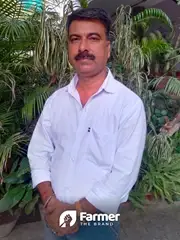
Narendra Garwa is a pearl farmer based in Rajasthan. He recently spoke to Krishi Jagran in the FTB Live session. Garwa has been practicing pearl farming for over seven years. Today, he has projects all over India and is trying to generate employment for all.
Garwa told our correspondent that he wanted to do something very different ever since his childhood. He initially used to be a book seller but his business went down. He then tried experimenting with growing vegetables on the rooftop. After attempting various ways to make a living, he learnt that pearl farming is now being done in India. He found out that the training for pearl farming was being provided to farmers at CIFA, Odisha. He got in touch with the scientists there and began his training. In 2015, he started his pearl farming business.
Secrets to Pearl Farming
In the initial days, Garwa faced many problems. He first bought 500 pearl shells from Kerala. However, this attempt proved to be a complete failure. He tried again and this time 300 of the 500 pearl shells he had bought survived. Slowly, he managed to keep the shells in less water and maintain pH balance. Soon, he was working on a huge profit.
Garwa also runs an NGO which provides training to aspiring pearl farmers. They also run another program which charges farmers 4,000 rupees for training, equipment, and any further help.

Going into the details of pearl agriculture, he explains how pearl farming is done. The pearl shell has a life cycle of 7-8 years. It yields pearls of different shapes; for instance, it would take 18 months to make a spherical pearl. It takes 12 months to make a non-spherical pearl. While Garwa produces both kinds of pearls, he insists that novice farmers initially produce non-spherical pearls as the mortality rate of spherical pearls is much higher and it takes a lot of experience to successfully produce them. He informs that the demand for non-spherical pearls is also high in the market. The cutting of non-spherical pearls is done by artisans and it only costs 50 Rupees per pearl.
Garwa also advises aspiring pearl farmers to start with a 10 × 30 feet pond layered with plastic sheet. He lays emphasis on the balance of ammonia content in the water. To achieve this, a water pump is introduced to the pond to keep the water fresh. The pH level should be 7-8. The pearl shells feed on algae and therefore it is necessary to maintain the pH of the water. If the shell is healthy, the pearl it produces would have a better shine.
A seed is implanted manually inside the shell and this seed is easily available in the market. He says that even if 500 pearl shells survive, a farmer can easily make 2-2.5 lakh rupees in a year. In fact, pearl agriculture is a highly profitable occupation and to increase its profitability, Garwa suggests farmers to practice it along with fish farming in the same pond. Another encouraging factor for farmers desirous of pearl farming is the fact that it does not require changing water in the pond many times. In a month, only 10-15% of the total water content in the pond needs to be changed.
In the beginning, Garwa faced a lot of problems with marketing the finished product as well. He didn’t have any understanding of where to sell it but slowly he learnt to make use of platforms like India Mart and Amazon. As his business grew, individuals and even companies started buying from him. Now, Garwa not only has an established business but he also provides training to aspiring farmers. Anybody interested in pearl agriculture could apply on their website www.alkhafoundation.com and they would be contacted by Garwa and his team. They help farmers from the beginning to the end of the process.
Imparting the Art of Pearl Farming
Alka Foundation is an NGO run by Garwa which helps farmers and women. They educate farmers all across the country about pearl farming and teach them how they can carry it alongside fish farming. Their aim, Garwa says, is to bring profit to the farmers. He says that implanting seed inside the pearl shell is an art and any wrong step in this can increase the chances of mortality of the shell. Garwa says that his foundation imparts this art to the farmers.
Garwa has received many district level awards and he was to be awarded by CIFA, Odisha as well. However, that got postponed due to the pandemic.



















Share your comments